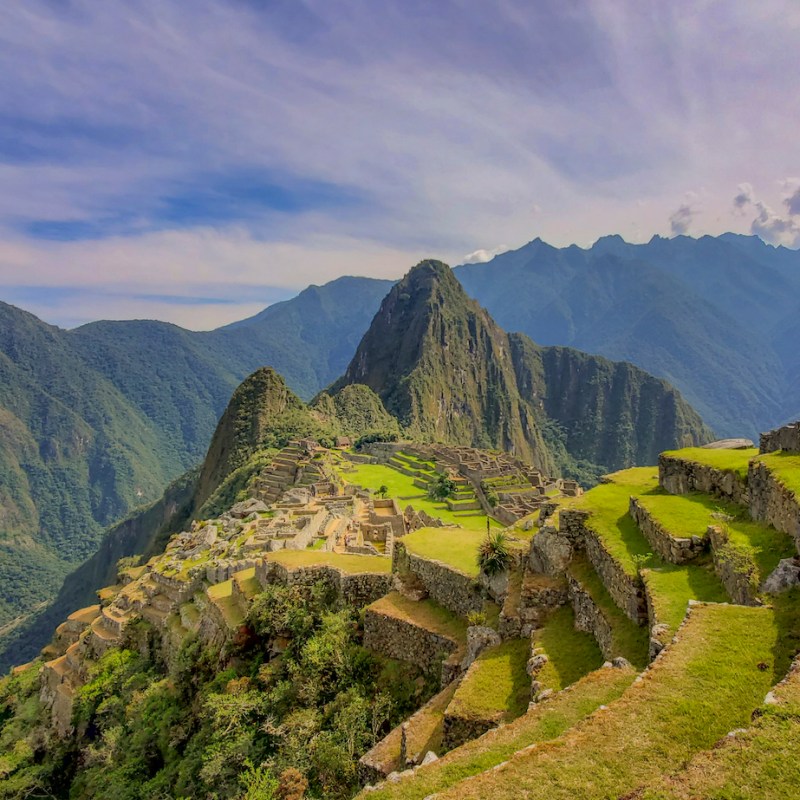
The very first question I was asked when I told people my wife and I were going to Peru was, “are you visiting Machu Picchu?”
Videos by TravelAwaits
My answer, “yes and no,” raised a bemused smile. In the Quechuan language, machu means “great” or “old,” and picchu means “high” or “mountain” — and so Machu Picchu literally translates to “great mountain.” I wasn’t about to climb Machu Picchu Mountain, but I was definitely going to explore the Inca ruins on an Andean mountainside: Machu Picchu citadel. They are different.
One of the New Seven Wonders of the World and a designated UNESCO World Heritage Site, Machu Picchu citadel sits at 7,972 feet above sea level overlooking the rhythmically named Urubamba River valley. Built between 1400 and 1500, what makes Machu Picchu so special is that almost 80 percent of its ruins remain in their original state — a far higher percentage than other discovered Inca ruins.
Here are the things I wish I knew before my visit to Machu Picchu. Hopefully, they help yours.

1. A Bit Of Knowledge Up Front Helps
We toured the citadel with a guide — don’t come here without one or your experience will be shallow. Booking a tour that includes the bus ride here, entrance to the citadel, and a guide is the most efficient and easy way to make the most of your visit. If all you are looking for is the iconic selfie with the citadel as a backdrop, go it alone.
There is so much history, so many archeological facts and theories around Machu Picchu and the Inca population (which seem to be continually updating based on most recent discoveries), that hearing them all at once made my head spin. It wasn’t long before I confused places and names and forgot who was doing what to whom — and why. I found it very helpful to arrive armed with a little bit of knowledge to more easily put our guide’s words into context.
I am no architecture buff, but I learned that Machu Picchu is built on a fault line — which wasn’t a coincidence — and that there is a reason large rocks lay undisturbed but incorporated into the precise stonemasonry of the buildings. There is also some level of constant renovation ongoing, as prescribed by UNESCO, and being aware of these facts made my appreciation of the ruins more meaningful.
2. Choose A Good Time
There are two seasons at Machu Picchu: the dry season from April to October and the wet season from November to March. July and August are the busiest tourist months, February the quietest (as some of the trails are closed). Luckily, we traveled in May when the temperature and humidity were very tolerable.
The earliest time you can enter Machu Picchu is 6 a.m., and many tours will encourage you to get there for sunrise (as the sun rises over the local mountain peaks), but many photographers prefer the natural afternoon light. Either way, you can beat the crowds by arriving early or later in the afternoon. Gates close at 5:30 p.m.

3. Choose Your Transportation Wisely — And Bring Your Documentation
The pretty little town of Aguas Calientes is the setting-off point for most visitors to Machu Picchu. Trains continuously shuttle backpack-laden tourists in from Cusco, disgorging them onto the station that doubles as the town’s main street. We arrived late one afternoon and strode a couple of hundred yards to our hotel ready for a fresh start in the morning.
There are two ways to reach Machu Picchu: either on foot (directly up the hill) or by bus. The 4-day Inca Trail that ends at Machu Picchu is popular with hikers. We didn’t even consider the pedestrian option, and, as we sat jolting up the bumpy 25-minute ascent along endless switchbacks and saw folks laboring uphill, I knew our decision had been correct. They looked hot and exhausted, and I reflected that my bus fare (about $24) was worth every penny.
Buses depart very early (around 5 a.m.), and the lines start even earlier. The lines appeared long but moved remarkably quickly as there was a constant stream of buses arriving to load up. In an effort to balance a decent night’s sleep with beating the mid-morning crowds, we had purchased tickets for the 8 a.m. bus. At the entrance to Machu Picchu, we once again had to show our passports and entry tickets.
4. Pay A Visit Before You Enter
There are no restrooms in the citadel. Be sure to make the most of the public restrooms at the entrance to the site.

5. Be Ready To Lose Your Breath
Once the through the entry gate, the hard work begins. We had a steep, 20-minute hike up to the citadel overlook. Some of the stone steps are not even, so hiking boots are a great idea. The route up is generally one way, though people arriving from the Inca Trail do come the other way. However, since they had trekked for four days to be here and they freely apologize for looking and smelling less than fresh, it’s easy to stand aside and let them pass. Besides, it’s an excuse to stop and catch your breath. At just under 8,000 feet, the exertion sure takes your breath away.
There was much excited chatter in many different languages as we started the climb. Within minutes, conversation had been sucked out of our lungs and we were trudging in silence, focusing only on the next breath. I’m glad we applied our altitude sickness patches and chewed coca leaves like a couple of ruminating alpacas. Whatever method you prefer — natural or prescribed — some form of altitude sickness prevention is highly recommended.
The climb, easily the most strenuous effort of the day, was ultimately rewarded by emerging onto the plateau and becoming part of the iconic Machu Picchu picture. It was time for that selfie.

6. The Weather Changes — Be Prepared
The weather can change rapidly at Machu Picchu, so come prepared. That doesn’t mean you have to carry lots of gear, but there are some essentials everyone should carry: water, sunscreen, sturdy footwear, and a hat. We dressed in layers and had a lightweight, rainproof jacket available.
Nothing is guaranteed here — not even the view. Clouds can roll in quickly and your dream selfie can disappear very quickly. We didn’t linger to capture that iconic photograph and got the shot safely into our camera (even if the first one wasn’t quite perfect).

7. Things To Pay More Attention To
Some say the real technological genius of Machu Picchu is actually underground, and what you can see represents only about 40 percent of the structure. The real genius lies in the buildings’ foundations and drainage systems that allow these structures to stand on such a steep mountainside, have access to fresh water, and to drain away rains to prevent possible landslides. The Incas devised a way to get water to the citadel from a freshwater spring 1,000 feet above the citadel through a canal and a series of fountains
It’s easy to overlook some of the detail of the stonework and how precisely and snuggly the stones fit together. The craftsmanship is almost as precise as anything modern technology can deliver today.
Looking down on this UNESCO site, it’s amazing to think that just over 100 years ago, the site was totally overgrown and hidden to the outside world. Although credit for “finding” the ruins in 1911 goes to Hiram Bingham (a professor from Yale University), a local farmer’s 12-year-old son actually brought him here through the undergrowth.
UNESCO has very strict protocols on what can and cannot be touched and how any remediation work must be accomplished. A keen eye will allow you to spot what is original and what has been more recently maintained.
8. A Few Don’ts
Selfie sticks and camera tripods are not officially allowed inside Machu Picchu, although we did see some use of the ubiquitous telescoping rod. We found most people were more than willing to help you capture that once-in-a-lifetime moment. Hiking poles are generally not allowed unless needed to aid mobility — but we saw plenty of those.
This may sound obvious, but, sadly, people have done it anyway: Machu Picchu is a sacred place, so don’t touch or deface the stones, pose naked, or defecate on the grounds.
Pandemic Precautions
Prior to the COVID pandemic, 5,000 people visited Machu Picchu daily. Today, numbers are limited to 3,000, and tickets are deliberately spaced out during the day. There is a danger of over-tourism, and it may become harder in the future to visit this iconic location.
In May 2022, we had to prove our full COVID vaccination status before being allowed onto the bus to Machu Picchu. At the time of our visit, face masks were mandatory in all public places (either a single KN95 or 1 disposable mask + 1 reusable fabric mask) even outdoors. Having said that, the use of masks outdoors was sporadic at best.
Enjoying The Clean Air
There were moments during our visit when I found myself alone, suddenly away from the crowds. In the silence, I inhaled possibly the cleanest, freshest air I have tasted and felt an overwhelming sense of peace and serenity. Was this magical place speaking to me? Maybe. I listened out for the soft calling of distant panpipes… Instead, I heard my wife calling.

